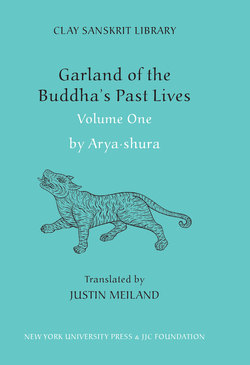Читать книгу Garland of the Buddha’s Past Lives (Volume 1) - Aryashura - Страница 23
На сайте Литреса книга снята с продажи.
Оглавлениеboth for the wealthy and the poor,
to delight in it is a delusion.
Evil in fact is its source.(18.22 [11]–23 [12])
According to Arya·shura’s framework, ascetic renunciation is seen as an aspect of virtue (sila), the second perfection. The other seven stories treated within the perfection of virtue are structured around the five precepts, a set of restraints central to Buddhist morality. “The Birth-Story of Shakra” (11) thus portrays the precept against killing; “The Birth-Story of the Brahmin” the precept against stealing; “The Birth-Story of Unmadayanti” (13) the precept against immoral sexual conduct; “The Birth-Story of Suparaga” (14), “The Birth-Story of the Fish” (15), and “The Birth-Story of the Quail Chick” (16) the precept against lying; and “The Birth-Story on the Jar” (17) the precept against alcohol. The key feat performed by the Bodhi·sattva in stories 14–16 is an “affirmation of truth” (saty’/adhisthana), whereby a statement of truth produces a magical effect on the outside world.
If we turn to the first ten stories of the “Garland of the Buddha’s Past Lives,” the importance of renunciant values, combined with the Bodhi·sattva’s role as a savior, becomes accentuated through the perfection of giving.20 The practice of giving is fundamental to the Buddhist path. Not only is it essential for the survival of the Buddhist monastic community, it is also the basis for cultivating morality and developing a renunciant attitude of non-attachment. This renunciant significance is highlighted by “The Birth-Story of Agastya” (7), in which the Bodhi·sattva’s main practice as an ascetic renouncer is, in fact, to give gifts.
